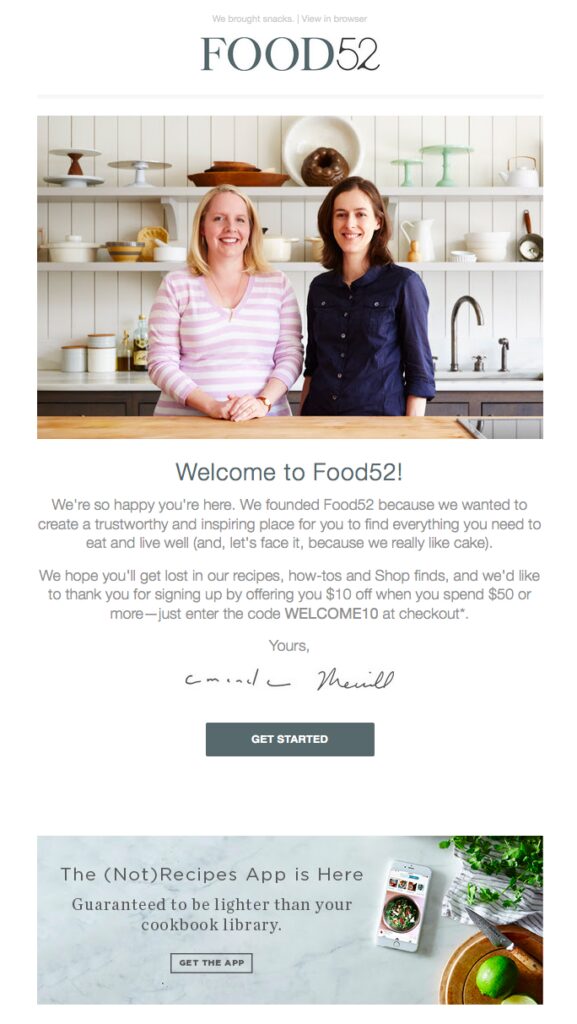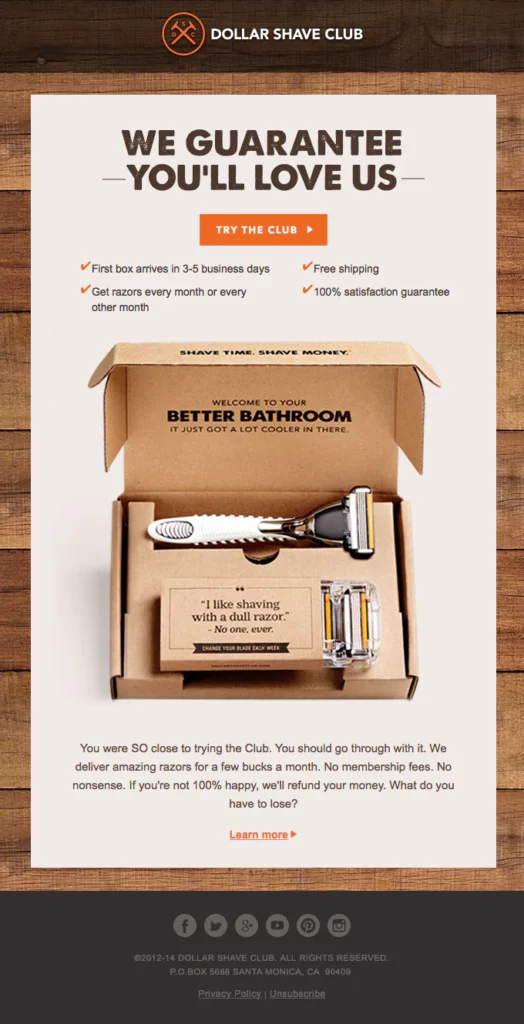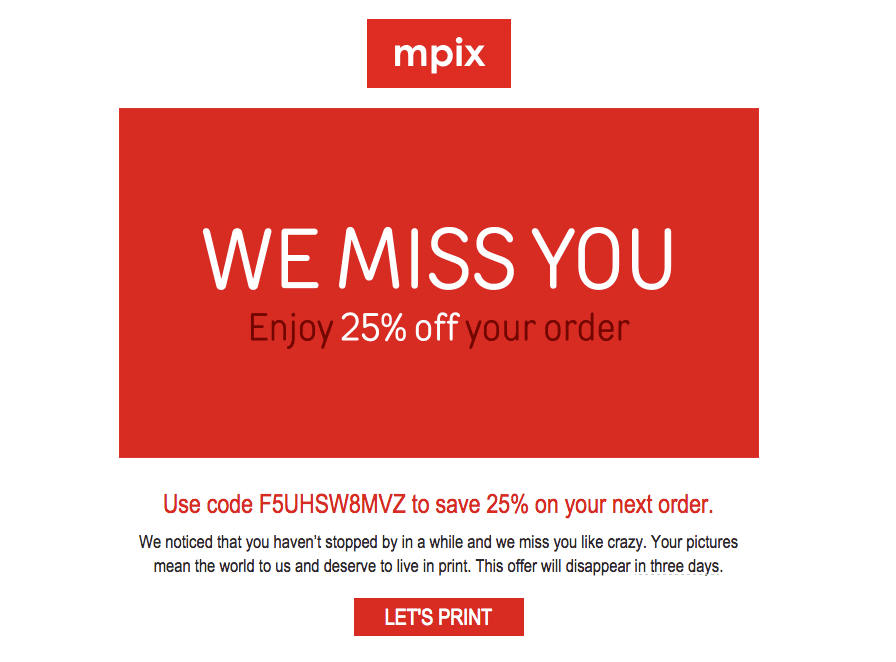
Automation saves time and money—but without a strategy, it can go horribly wrong.
Email automation is a key factor in engaging your audience, and it’s relatively easy to set up. Once you’ve created triggers, emails will send automatically whenever a particular action occurs. This saves marketers countless hours of manual emails. In fact, 30% of professionals surveyed said the most significant benefit of marketing automation was the time it saved them.
When coupled with an effective automation strategy, email marketing has one of the highest ROIs of all forms of advertising, boasting an impressive $36 returned for every $1 spent. Furthermore, automated emails drive over 14x higher revenue per recipient (RPR) than manual messages.
Yet without a strategy, your brand will find a permanent home in the spam folder. Avoid common mistakes by implementing best practices. This guide will cover the best email marketing automation platforms and the key components or use cases for automation.
Table of Contents
How Email Automation Works
Most email marketing automation platforms offer pre-made automated campaign workflows and sequences strung together. The platform sends emails according to established rules based on actions that a subscriber did or did not take, along with time-delay triggers. Automated emails could include a welcome message, a holiday message, or a re-engagement message if a subscriber hasn’t made a purchase or opened an email after a set period of time.
A good automation strategy uses email marketing’s ability to segment customers into targeted groups based on certain behaviors or characteristics. Marketers that use this segmentation have seen upwards of a 760% increase in revenue campaigns. The most popular marketing automation platforms include:
- Klaviyo
- Constant Contact
- Omnisend
- Mailchimp
- HubSpot
- Pardot by Salesforce
- Drip
- Campaign Monitor
These platforms have plenty of message and journey templates you can adjust to fit your needs. Once set up, automated flows don’t require much effort to maintain, and they provide a highly personalized experience for your customers but using their names and recent activity data.
Below we’ll cover the most popular use cases of email automation.
Welcome Messaging
A welcome email is a message sent after a person signs up for your email list, and it reaches subscribers when they’re most interested in hearing from your brand.
Because someone has just recently visited your website and signed up, welcome emails typically generate an average open rate of nearly 70% and a click-through rate of over 16%. So what should a marketer do with such a captive audience?
A welcome email is a time to thank your new subscribers for joining, welcome them to the subscription, and even let them know how frequently they’ll be hearing from you and what kind of topics you’ll discuss. You can also tell your new users what they should do next, pointing them to the most important pages of your website.
Additionally, the welcome email helps to introduce your brand and provides information on your products or services and instructions for how to access customer portals.
Since welcome messages perform at 4x the click rate and 23x the conversion rate of non-automated campaigns, it’s an essential email to have for your business.
Notice how in the example below Food52 explains its mission to new subscribers. In addition, they offer a welcome discount code to nudge subscribers to make their first purchase.

Source: Hubspot
Abandoned Interaction Messaging
An email marketing automation strategy doesn’t just target engaged subscribers. Abandoned cart emails are delivered to potential customers who add products to their shopping carts but don’t complete the purchase. These emails are designed to recover sales and increase profit.
Prospects who abandon their cart are still more likely to convert than a totally new customer because they’ve gone farther down the sales funnel. Many email marketing automation platforms also use browser abandonment automations, triggering an email when a customer has spent time browsing a particular product, even if they did not add that product to a cart.
Abandoned cart emails remind shoppers of the product that caught their interest and their feelings regarding it. These messages put the shopper back into the emotional state when they almost completed the purchase. Some companies even offer a discount or added incentive to finish the purchase now.
On average, cart abandonment emails convert almost 4% of recipients and have the highest RPR of all automated flows at $3.52.

Source: Shopify
Thank You Messaging
As a marketer, you are often asking your subscribers to do something for you, whether that’s to download an ebook, take a survey, or check out a product.
Since you’re frequently asking for favors, it’s important to say thanks every now and then. A simple automated thank you email after a customer completes an action can humanize your brand and show customers they’re valued.
As part of your automation strategy, the most common times to send thank you emails are post-purchase, after a donation, following participation in an event, or after filling out a lead form.
Birthday and Holiday Messaging
Birthdays and holidays are an excellent way to incentivize customers to make another purchase, especially since it gives them a sense of fulfillment to receive something they want for their special day.
A good email marketing strategy is to offer a special discount or freebie to customers on their birthdays. These well-timed discounts make customers feel valued and give them an incentive to re-engage with your brand. Also, it’s good to have a time limit on when they can use these discounts so you promote urgency in buying.
Holidays are a great time to promote products and services, but you’ll face stiff competition for a customer’s attention. Timing is everything. You may consider segmentation with your email marketing platform, automating early deals to highly-engaged customers or flash-sale perks to customers who have not recently made a purchase.
Re-Engagement Messaging
On that same topic, re-engagement emails are critical to an automation strategy. Also called a win-back campaign, a re-engagement campaign is a sequence of emails sent to inactive subscribers after a certain amount of time.
While it may seem counterproductive to target disengaged customers, nearly 45% of subscribers to whom you send a “win-back” email will open your future emails. The first email should acknowledge that “it’s been a while.” Then you can offer an incentive to re-engage, perhaps with a time limit to help them get moving. You can also offer a short survey to gain information on why they stopped engaging.
The timing of your re-engagement messaging will depend on your sales cycle. Some ecommerce sites may realistically expect customers to make purchases multiple times per month, so a few days of disengagement may trigger an email. Subscription services may wait a month or more before re-engaging through their email marketing platform.

Source: BEE
Back in Stock and Order Replenishment Messaging
A replenishment email reminds your customers to reorder items when they run out. Replenishment emails are aimed to drive recurring revenue. In contrast, back-in-stock emails are messages to remind customers that a particular item is back in your inventory—especially an item they have browsed before.
Both types of messages are vital to your email marketing automation strategy and building brand loyalty. These emails increase the number of touchpoints between you and your customers and anticipate their needs. Customers often view these messages as helpful reminders rather than advertisements.
Even if your business operates on a subscription model, an email reminding customers that their monthly order is about to ship will give you further opportunities for engagement and a chance to have customers update relevant information such as their shipping address or payment method.
Start Engaging Your Audience Today with Coalition Technologies
These automated journeys should be part of your digital marketing strategy to foster relationships with users and provide your audience with relevant content. An automation strategy for email marketing ensures that you’re sending the right messages to the right subscriber segments at the right times.
Although automation saves time, it should not mean all human involvement stops. Without examining data from your campaign and making adjustments as needed, your campaign may diminish in its effectiveness or see greater bounce rates and unopened messages. Coalition’s expertise and active management of email automation increased a client’s revenue by 110% and doubled their email open rates.
We’ve helped hundreds of companies optimize their websites to increase sign-ups for email lists before developing a winning email marketing strategy. Our email marketing automation strategies will improve your performance, increase ROI, and generate new business. Call us at (310) 827-3890 or contact us for a free proposal of how we can help your business thrive.


